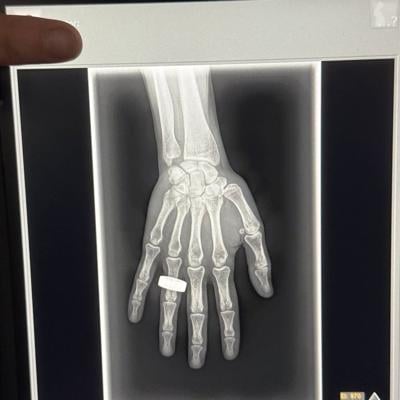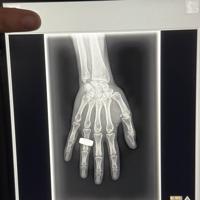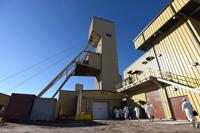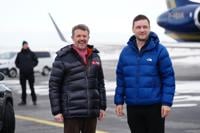As four space tourists orbited the north and south poles earlier this month and marvelled at the views of Earth, a group of ║├╔źtvs celebrated an X-ray image taken aboard the spacecraft using technology developed at the University of Waterloo.
"This is the first X-ray ever done in space," said Amol Karnick, CEO of KA Imaging, a Waterloo-based company that's commercializing what it calls the world's first multi-image X-ray detector.
"It's a first for ║├╔źtvs in space."
The three-and-a-half day trip of the SpaceX Dragon capsule was chartered by bitcoin investor Chun Wang and blasted off from NASAÔÇÖs Kennedy Space Center on March 31 with three others aboard.
It was the first human space flight to circle the globe above the poles and the first Pacific splashdown for a space crew in 50 years.
And in a post on X shortly after midnight EST last Wednesday, Wang shared the first medical X-ray image taken in space. 
Featuring a hand with a ring, KA Imaging says the image mirrored the first ever X-ray image accidentally captured over a century ago by Wilhelm Roentgen.
The X-ray was part of the SpaceXray project, one of the 22 scientific studies selected to be part of the mission.
Being able to do X-rays in space is a big deal, Karnick said. First, monitoring bone mineral density in astronauts is important due to the detrimental effect of microgravity, and the X-ray receiver the company produces is able to do that.
Second, Karnick says the receiver could be used on equipment or on the spacecraft itself, to diagnose problems or to check the quality of repairs.
Karnick says the KA Imaging X-ray receiver, which is about the size of a large laptop, is also able to differentiate between bones and soft tissue such as the lungs or the heart, which could be useful for diagnosing pneumonia or cancers.
But before Wednesday's hand image, Karnick says it wasn't known if X-rays in space were feasible, due to concerns that natural background radiation from space might affect the quality of the image.
"The first images we've seen don't seem to have any of those issues," Karnick says.
Karnick says the same technology can revolutionize imaging in remote and underserved areas on Earth.
The crew aboard the space flight weren't X-ray technicians, so Karnick and others had to teach them before the flight how to use the equipment, which also consisted of a portable X-ray generator produced by Chicago-based MinXray.
ÔÇťWe're grateful to the crew and immensely proud that life in space will be safer and better because of this technology," Sheyna Gifford, principal investigator of the SpaceXray study, said in a news release.
"Let's make life on Earth better because of it, too.ÔÇŁ
This report by ║├╔źtvwas first published April 7, 2025.








































